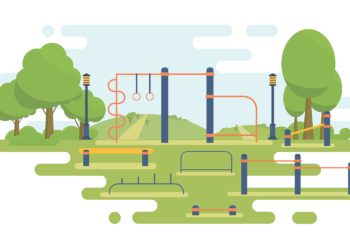Thinking about building an indoor climbing wall for your rec center? Here’s why you should have one. Already have a climbing wall on campus? Here’s how to improve it.
Vendors in the climbing and adventure recreation industry have realized that their mission should be more than selling equipment. Instead it should be helping customers succeed is the best way to increase business and enhance customer satisfaction. Below are some statistics and recommendations that can help any facility that has a climbing wall (or is considering one) maximize its overall benefits.
First things first – how important is having a climbing wall? If you look at the numbers, sport climbing has resumed its steady growth after leveling off during the recent recession. In the 2014 report by the Outdoor Foundation, a nonprofit organization that tracks sports participation, the number of sport climbers (which includes indoor climbing) was at five million and growing, and participation among college age climbers has rapidly outpaced the growth in other age groups.
These amenities have been a positive factor in recruiting and keeping students. In a recent article in Best Value Schools on the 20 Most Impressive College Gyms and Student Rec Centers, a striking 60 percent of the schools had a climbing wall.
Recent experience with college and university customers show that their climbing walls are an integral part of their recreation centers. One example is the University of Nebraska, which began offering climbing classes and immediately averaged 500 students a year. Their facility staff also credits the introduction of auto belays as a way of encouraging beginning climbers and enhancing the educational aspect and social connections that are the focus of their mission, helping push participation on their climbing wall to 5,000-6,000 annually.
Next, use auto belays to make sure you’re getting the most of a climbing wall on campus. The easiest way to is use auto belays. In recent research, over 50 percent of colleges and universities with auto belays have seen an increase in membership/participation. The ability to climb without a partner and the enhanced safety provided make auto belays an easy, high-value choice.
Finally, is the need to occasionally change climbing routes. It’s relatively easy to do and also has high value, as the benefit of keeping the climbing experience fresh and encouraging users to come back for more and challenge themselves is what the educational experience in a rec center amenity is all about.
Bill Carlson is Director of Channel Sales at Head Rush Technologies, where he combines his people skills, product knowledge, managerial abilities, and engineering-like academic background in Analytical Chemistry with his love of the outdoors to bring wider acceptance to Head Rush products worldwide. bill.carlson@headrushtech.com (720) 565-6885










